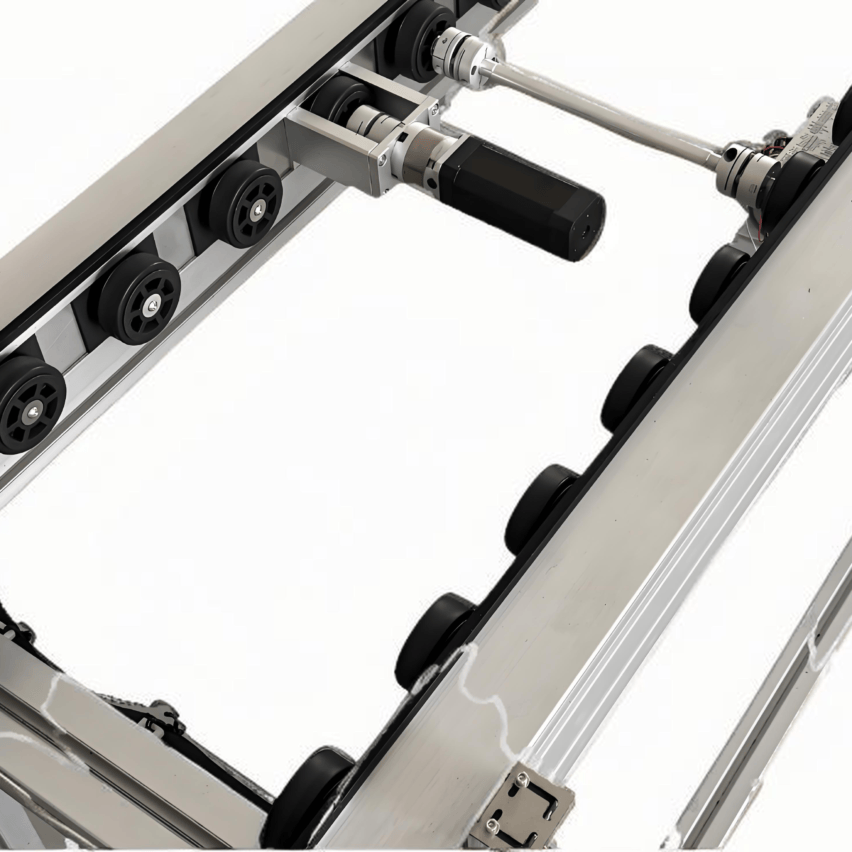How to solve the problem of high cost of mining transport? __ Belt line saves ten million freight cost per year
In mining, traditional truck transport faces steep terrain constraints and fuel costs account for more than 30% of operating expenses. A metal mine in Yunnan has automated ore transport by deploying eight tandem belt lines with a total length of 3,595 metres:
- Slope breakLaying non-slip belts in 18-29° inclined roadways, overcoming the 16° slope limitation of traditional equipment.
- Costs plummet: Cost of transporting ore reduced from $20/tonne to $4.5/tonne, saving $10.85 million by transporting 700,000 tonnes of ore annually
- Dust controlClosed tubular design with spray system reduces dust concentration by 80%.
Mining enterprise actual test: steel rope core tape machine with 3000t/h capacity continuous operation, failure rate than scraper machine reduced 65%
How can food factories safeguard hygiene standards? _Food-grade belt lines for zero-contamination transfers
Food processing has stringent hygiene requirements, and a bakery company uses belt lines made of PU to build aseptic production lines:
- Material upgradeFood-grade PU conveyor belts are FDA approved and have an antibacterial surface coating that inhibits the growth of E. coli bacteria.
- No dead space designOpen stainless steel rack with CIP cleaning system reduces sterilisation time to 15 minutes/shift.
- temperature zone adaptation150°C Teflon belts for bakery applications and -25°C low temperature belts for frozen food applications.
Production line test: biscuits from baking to packaging the whole process of conveying, product breakage rate from the manual handling of 3% down to 0.2%
Inefficient sorting in logistics centres? _Matrix belt line speed up by 3 times
Explosive growth in e-commerce tests sorting capacity as a logistics centre handling 100,000 express deliveries a day deploys an intelligent belt system:
- Dynamic triage: 200 steerable belts in a matrix, automatic switching of conveyor paths by code scanning
- human-machine collaboration: Workstations with integrated scanning guns and electronic scales for improved packing efficiency 40%
- Energy efficient operation: Frequency conversion technology reduces energy consumption during no-load hours by 35%
Measured comparison: single hour processing volume reached 150,000 pieces during the Double 11 period, the error rate from 1.5% of manual sorting to 0.05%
How can automotive factories distribute parts accurately? _Modular Beltline Integrated Assembly System
Automotive manufacturing requires the precise distribution of tens of thousands of parts, and one automotive company applies a customised belt solution to its assembly line:
- Flexible Configuration: Quick dismantling of aluminium profile racks, 2 weeks to complete line modification
- error-proof design: RFID identification system linked to the electronic signage, mis-assembly rate down 90%
- human factors engineering: Liftable work table with slow stop belt reduces employee fatigue 40%
Benefit verification: engine assembly station beat reduced from 5 minutes to 3.2 minutes, daily capacity increased by 300 units
How to deal with gravel dust on construction sites? _Sealed belt line to control dust and save energy
Concrete conveying is often accompanied by dust pollution, and a high-speed railway project uses a closed belt line to convey building materials:
- Fully sealed structure: Corrugated baffle + rain cover design, dust diffusion reduction 95%
- Overloaded configurations: 2000mm wide rubber belt with a load capacity of 200kg/m and a gravel conveying capacity of 458m³/h.
- Mobile deploymentHydraulic outriggers with universal wheels complete 300 metres of line transfer in 2 hours.
Project test: compared with the dump truck transport, the concrete pouring efficiency is improved by 50%, and the labour cost is reduced by 60%.
Technological evolution: from canvas tape to intelligent logistics node
Current belt conveyor line positiveGraphene reinforced tape(3 times longer life).AI pre-screening system(4 hours in advance warning of failure) Evolution. In Yunnan, a lithium factory, the Internet of Things belt line has been realised with the precise connection of AGV - when the sensor detects the material backlog, automatically scheduling AGV diversion, so that the efficiency of the warehouse turnover increased by 35%. This mode of equipment collaboration is redefining the intelligent boundaries of industrial logistics.













